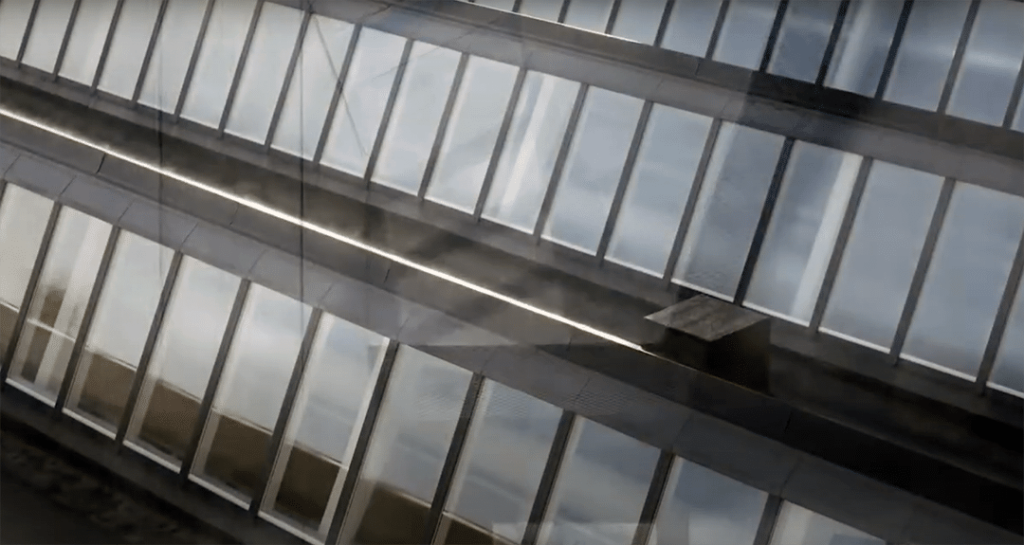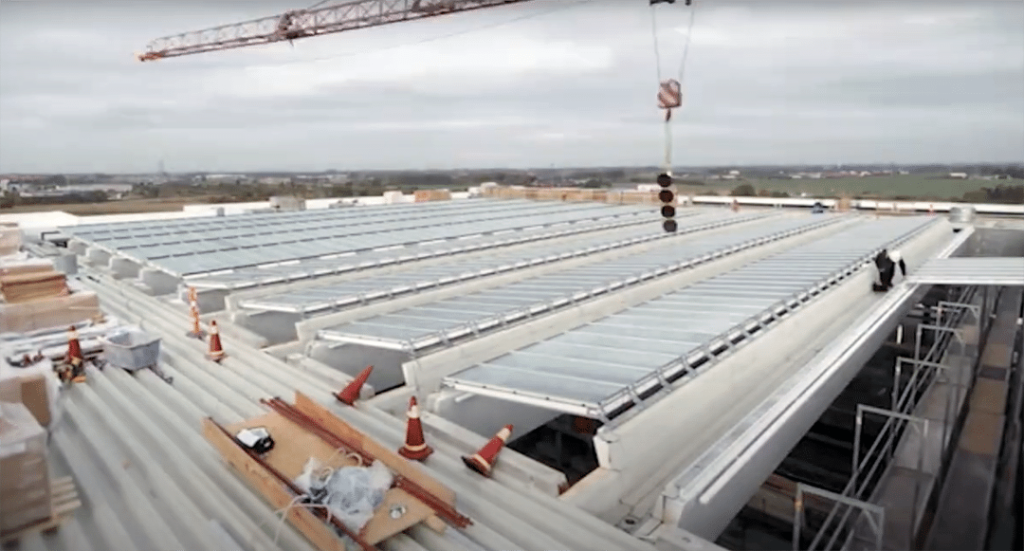Sunlight streaming through a strategically placed skylight can transform a commercial space. It bathes the interior in natural light, boosting mood, improving productivity, and even enhancing the building’s aesthetic appeal. But before basking in this transformative glow, a crucial question remains: how much does it cost to install a skylight in an existing commercial roof?
Navigating the answer requires exploring a spectrum of factors, from skylight types and sizes to installation complexities and regional variations. This article acts as your guiding light, shedding clarity on the cost considerations and empowering you to budget effectively for your desired skylight installation.
Unpacking the Price Spectrum: A Delicate Balance
While pinpointing an exact cost without specific project details is impossible, understanding the influencing factors is key to informed decision-making. Here’s a breakdown of the key players:
Skylight Type:

- Fixed:Offering unobstructed views and natural ventilation, fixed skylights present the most affordable option, typically ranging from $1,000 to $4,000per unit.
- Venting:Adding the ability to regulate airflow, venting skylights climb the price ladder, costing between $1,500 and $5,000per unit.
- Electric Venting:Integrating motorized operation for effortless control, these skylights elevate comfort and convenience, with costs ranging from $2,000 to $6,000per unit.
- Specialty (Dome, Pyramid):For architectural flair and unique light distribution, specialty skylights demand a premium, often costing between $3,000 and $7,000per unit.
Skylight Size:

Unsurprisingly, bigger skylights translate to higher costs. Bigger isn’t always better, though. Remember, size matters, but it should prioritize your desired natural light level and available roof space. A small (2ft x 2ft) fixed skylight might cost around $1,000, while a larger (4ft x 6ft) venting skylight could approach $5,000.
Installation Complexity:

The ease of installation significantly impacts the final cost. Factors like roof pitch, accessibility, and the need for additional structural support can significantly impact the labor and time required. Installing a skylight on a flat, easily accessible roof will be less expensive than tackling a steep, complex roof requiring scaffolding or additional framing.
Material Choices:
While polycarbonate offers affordability, its lifespan and scratch resistance are lower than glass. Opting for high-quality, impact-resistant glass adds to the cost but ensures better durability and clarity. Additionally, choosing energy-efficient glass with coatings to control heat gain or loss can increase the price but contribute to lower energy bills in the long run.
Location:
Labor costs and material availability vary geographically. Expect higher costs in regions with limited qualified installers or specific material requirements. Obtaining quotes from local contractors will provide the most accurate pricing reflection for your specific location.
Additional Considerations:
- Permits and inspections:Factor in permit fees and potential inspection costs.
- Interior finishing:Consider costs associated with drywall patching, ceiling modifications, or electrical work for motorized units.
- Long-term maintenance:Remember to budget for periodic cleaning and potential future repairs.
Beyond the Numbers: Value Beyond Price

While cost is crucial, remember that skylights offer significant value beyond their initial price tag. Consider these benefits:
- Enhanced occupant well-being:Natural light reduces stress, improves mood, and boosts productivity.
- Reduced energy consumption:Strategically placed skylights can significantly lower lighting costs.
- Improved aesthetics:Skylights add architectural interest and create a more inviting and inspiring workspace.
- Increased property value:Studies suggest properties with skylights can command higher valuations.
Illuminating the Path Forward: Budgeting and Next Steps

By understanding the key cost factors and considering the potential value, you can create a realistic budget for your commercial skylight project. Here are some additional tips:
- Get multiple quotes:Compare quotes from at least three qualified contractors to ensure you’re getting competitive pricing.
- Prioritize quality:While tempting to choose the lowest bid, prioritize experienced installers and high-quality materials for long-term value.
- Seek professional advice:Consult with an architect or engineer for guidance on optimal skylight placement and size for your specific needs.
- Consider long-term savings:Factor in potential energy cost reductions and the positive impact on occupant well-being when evaluating the overall return on investment.
Partnering with Local Expertise: Allweather Roof, Your Skylight Journey Begins

While navigating the intricacies of cost considerations and installation complexities can seem daunting, partnering with a reliable and experienced commercial roofing contractor can bring clarity and peace of mind. Look no further than Allweather Roof, located in Golden Valley, Minnesota. They boast a proven track record in commercial skylight installations, with a team of certified professionals adept at handling various skylight types and complexities.
Here’s why choosing Allweather Roof stands out:
- Free Consultations and Transparent Estimates:Receive a detailed breakdown of costs specific to your project, ensuring informed decision-making without surprises.
- Expertise You Can Trust:Their skylight specialists possess the knowledge and experience to tackle any project, from standard fixed skylights to complex motorized venting options.
- Commitment to Quality and Safety:Rest assured they use only top-of-the-line materials and prioritize safety throughout the installation process.
- Seamless Service and Support:From initial planning and permitting to final touches and post-installation support, Allweather Roof manages your entire project diligently.
- Local Understanding and Compliance:Their extensive experience in the Golden Valley area ensures your skylight installation adheres to all local regulations and building codes.
Don’t wait any longer to experience the difference natural light can make in your commercial space. Take the first step towards a brighter future by contacting Allweather Roof today!


